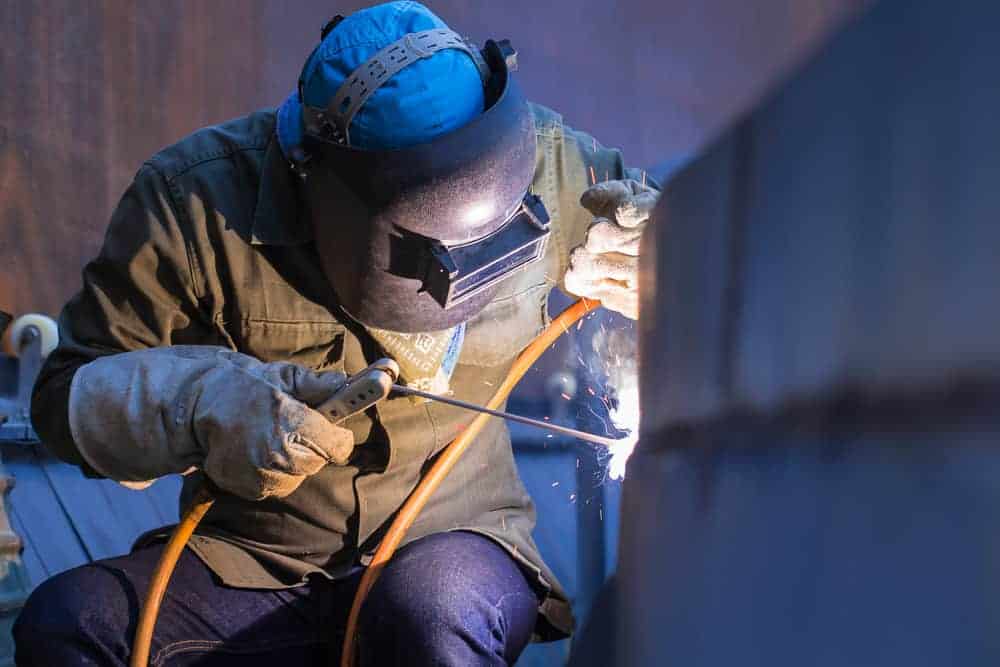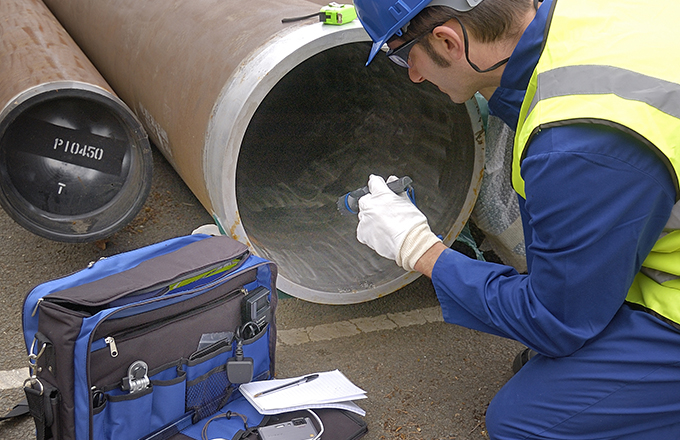Professional Houston Welding Inspection: Guaranteeing Architectural Stability and Security
Professional Houston Welding Inspection: Guaranteeing Architectural Stability and Security
Blog Article
Exactly How Welding Evaluation Works: An In-Depth Analysis of Techniques, Standard, and the Role of Assessors in Making Certain Architectural Stability and Safety And Security
Welding inspection is a crucial part in the building and construction and manufacturing markets, where the integrity of bonded joints is paramount to safety and reliability. Inspectors are tasked with not only assessing weld quality against strict criteria but likewise interpreting complicated codes and standards.
Value of Welding Assessment
Welding examination is crucial in guaranteeing the integrity and safety of bonded structures, with researches showing that approximately 70% of structural failings can be mapped back to inadequate welding methods. This underscores the relevance of methodical evaluation procedures throughout the welding lifecycle, from preparation to completion. Effective examination not just recognizes issues before they intensify right into considerable concerns however likewise makes certain compliance with market standards and laws.

The function of welding inspectors extends past mere quality assurance; they are vital in safeguarding public security and lessening responsibility for companies. By carrying out rigorous evaluation procedures, business can identify issues such as incomplete combination, fractures, or too much porosity, which can compromise the general strength of a bonded joint. In addition, ongoing training and qualification of inspectors contribute to the overall top quality guarantee in welding operations, cultivating a society of safety and quality.
Additionally, welding inspection plays a pivotal role in keeping operational performance. Identifying problems early while doing so promotes prompt rehabilitative activities, lowering pricey rework and job delays. Ultimately, a durable inspection framework acts as a foundation for long lasting and trustworthy bonded frameworks, ensuring they satisfy both useful and safety and security requirements.
Usual Evaluation Approaches
Exactly how can one guarantee the high quality of welded joints throughout the examination process? The execution of different evaluation approaches is vital in analyzing weld honesty and recognizing potential defects. Common methods consist of Visual Assessment (VT), which is usually the first line of defense, permitting examiners to find surface area flaws such as cracks, porosity, or insufficient fusion by aesthetically examining the welds.
Ultrasonic Testing (UT) is an additional extensively used method, using high-frequency audio waves to identify internal defects within the weld. This technique is especially effective for identifying concerns that are not visible to the naked eye. Radiographic Evaluating (RT) utilizes X-rays or gamma rays to develop photos of the weld, enabling the identification of volumetric flaws, such as voids or incorporations.
Magnetic Particle Evaluating (MT) and Liquid Penetrant Testing (PT) are additionally famous methods, concentrating on surface defects. MT relies on magnetic areas to disclose surface area and near-surface gaps, while PT entails using a liquid color to highlight imperfections. Each of these methods serves an unique purpose, guaranteeing the comprehensive evaluation of bonded joints and guarding structural honesty and security.
Requirements for Evaluating Welds
The assessment of welds is directed by a set of well established criteria that make certain both capability and safety and security in welded structures. These requirements encompass various factors, including weld dimension, account, and infiltration, which should comply with defined requirements. Compliance with market codes, such as those established by the American Welding Society (AWS) or the American Society of Mechanical Designers (ASME), is crucial in identifying the acceptability of a weld.

Weld metallurgy plays an essential function; the examination thinks about the combination quality in between base and filler products, in addition to heat-affected areas. Lastly, the general mechanical residential or commercial properties, including tensile strength and ductility, need to satisfy the needs developed for the specific application. Collectively, these requirements guarantee that welds not only satisfy aesthetic requirements however likewise do dependably under operational problems.
Duty of Welding Inspectors
A welding assessor's competence is pivotal in making certain the honesty and top quality of welded frameworks. These specialists play an essential role in the fabrication and building process by validating that welding procedures stick to established criteria and specifications. Their obligations incorporate a comprehensive variety of jobs, including visual inspection of welds, evaluating welding paperwork, and conducting non-destructive testing (NDT) methods such as radiographic or ultrasonic testing to identify defects.
Welding examiners are likewise in charge of translating welding codes and criteria, guaranteeing that the welders are certified which the materials utilized meet the necessary requirements - Houston Welding Inspection. They click reference must maintain precise documents of assessments, which work as paperwork of conformity and quality control. Furthermore, these examiners commonly work together with engineers and job managers to attend to any kind of concerns that develop during the welding procedure, giving recommendations for corrective activities when necessary.
In addition to technical skills, reliable interaction is necessary, as welding examiners have to convey searchings for plainly to stakeholders and assist in training and support for welders. Inevitably, their duty is essential to maintaining safety and reliability in bonded structures, contributing substantially to the overall success of building and construction jobs.

Difficulties in Welding Evaluation
What barriers do welding inspectors encounter in their crucial function? The intricacies of modern welding methods and materials present considerable obstacles for assessors charged with ensuring compliance with safety and security requirements and architectural stability. One key barrier is the quick development of welding modern technology; assessors have to consistently update their understanding and skills to continue to be reliable. This ongoing education and learning is necessary to understanding brand-new products and processes, which can differ widely in characteristics and demands.
In addition, assessors frequently come across variations in worksite problems that can hinder examination procedures. Elements such as ecological conditions, ease of access, and the physical state of the bonded structures can make complex detailed examinations. Time constraints enforced by project routines can better pressure assessors, possibly influencing the thoroughness of their evaluations.
Furthermore, the subjective nature of some inspection methods can result in variances in examinations. Aesthetic examinations might differ based on the examiner's experience and perspective. To mitigate these difficulties, the adoption of innovative non-destructive screening strategies and standardized methods comes to be important - Houston Welding Inspection. Eventually, getting read more rid of these barriers is vital for guaranteeing the safety and integrity of welded frameworks throughout various sectors.
Verdict
Welding evaluation is vital for maintaining architectural stability and security in various industries. Via the application of diverse evaluation methods and adherence to established requirements, assessors play an essential duty in determining defects and guaranteeing conformity with market standards. The obstacles faced in this field highlight the requirement for continuous enhancement in assessment techniques and methods. Ultimately, effective welding evaluation adds dramatically to mitigating dangers and enhancing the total integrity of welded structures.
Welding evaluation is an essential component in the building and production markets, where the stability of welded joints is extremely important to security and dependability.Welding evaluation is essential in making sure the stability and safety of bonded structures, with research studies indicating that up to 70% of architectural failures can be mapped back to inadequate welding methods. Their duties include an extensive array of jobs, including aesthetic examination of welds, evaluating welding documents, and performing non-destructive screening (NDT) approaches such as ultrasonic or radiographic screening to determine flaws.
Welding assessors are likewise liable for analyzing welding codes and criteria, ensuring that the welders are certified and that the materials utilized satisfy the required requirements. Ultimately, reliable welding assessment adds considerably to mitigating risks and improving the overall reliability of bonded frameworks.
Report this page